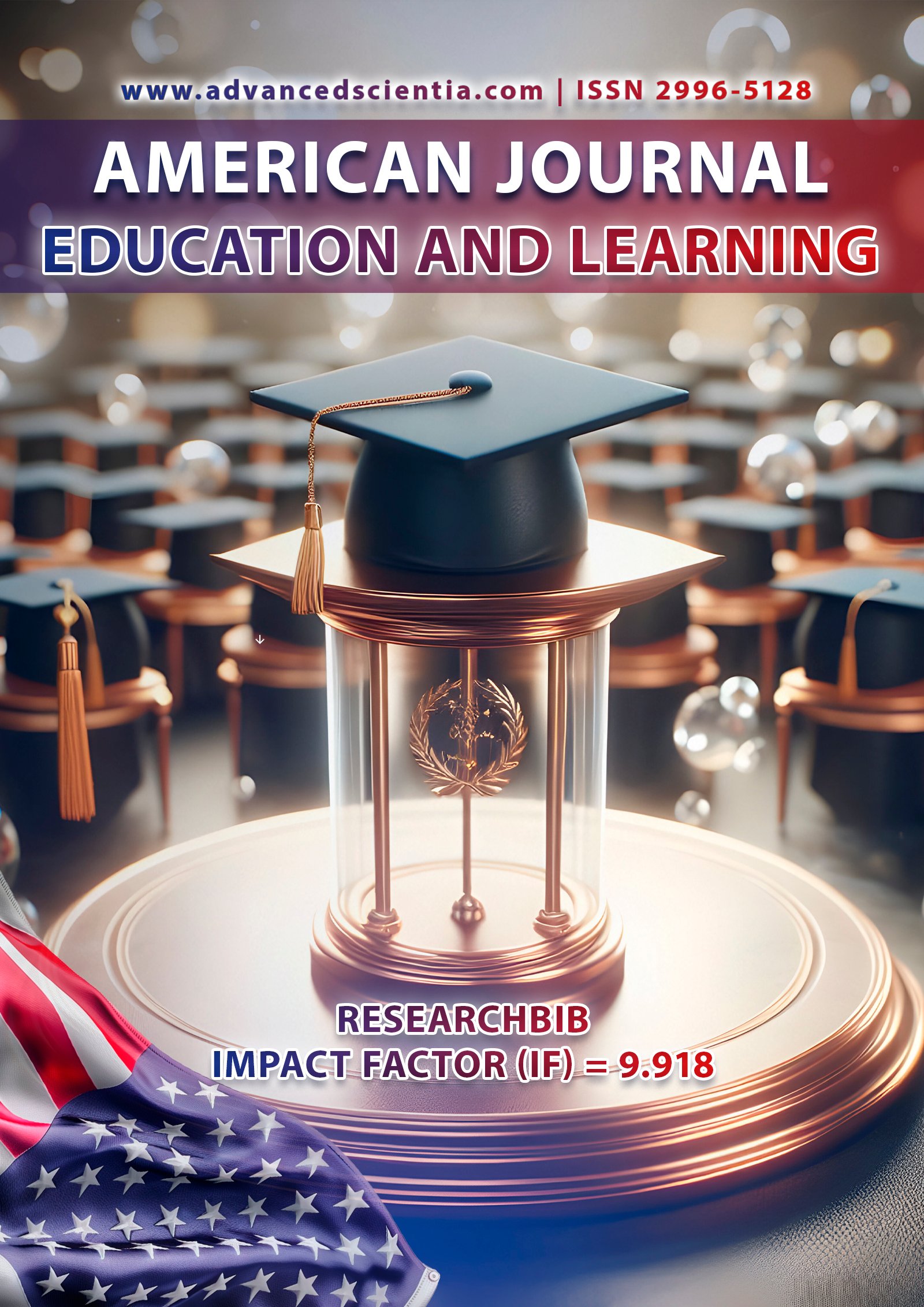THE CONCEPTS OF INTERNATIONALISM AND INTERNATIONAL VOCABULARY
Abstract
The article talks about the phenomena of internationalism and assimilated words in the English language. The author of the article classifies international words in English according to their sources. More researchers emphasize the spread of assimilated neologisms in English. In direct or indirect translations into English and Uzbek, native or international words are sometimes kept exactly, sometimes one is replaced by another, one is used instead of the other, or a word that does not exist in the original is used. Addition cases occur. The purpose of this article is to determine the pragmatic aspect of translation features of foreign or foreign words at the level of two languages. The lexical, morphological-syntactic, functional-semantic, stylistic, poetic evaluation tools, syncretization of individual word groups in the texts translated from English to Uzbek were studied, and it was scientifically and theoretically proven that the characteristics of the mentality of the two peoples are different. As a result, when the native or international words in the analyzed works were studied on a two-language scale, it was observed that they have different artistic and stylistic functions.
References
1. K. Heller, Das Fremdwort in der deutschen Sprache der Gegenwart(Leipzig, 1966), 40-41.
2. Keltuyala V. V. On the semantic characteristics of commonly used international words. L.,-1965. – p. 41-52.
3. Paul Wexler Towards A Structural Definition Of ‘Internationalisms’-https://doi.org/10.1515/ling.1969.7.48.77
4. J. Buranov .Typological categories and comparative study of languages, Moskva: MGU,1979. -48.
5. U.K. Yusupov. Theoretical Foundations of Comparative Linguistics. - Tashkent, 2007. - 127 p.
6. K.U. Yusupova. Giving stable compounds and expressions in translation. In EConference Globe 477-481.
7. M.D. Djusupov. Lingvotipologicheskie, sotsiolingvisticheskie i lingvodidakticheskie problemy obucheniya nerodnomu yazyku // Filologiya masalalari. - Tashkent, 2002. - № 1-2. - S. 74-78.
8. M.I. Rasulova, Z.I.Shukurova. Comparative typology of English, Uzbek and Russian languages.Tashkent.2017.
9. K.O. Saparova. https://lingcure.org/index.php/journal/article/view/1398.
10. J. Buranov. Subject and methods of comparative typology // Republican scientific conference. Questions of comparative typology (Germanic, Romanesque, Russian,Turkic languages.1981.
11. J. Buranov. Comparative typology of English and Turkic languages. – M., 1983.
12. Anna Eduardovna R. The pragmalinguistic aspect of international vocabulary: Based on the material of the English language. Moskov. 2002.
13. Kopylova Elena Viktorovna. International lexemes in the aspect of semantic relations. Moskov. 2015.
14. D.M. Kholikova. The notion of internationalisms and interlingua // Образование и наука в ХХI веке. – Россия, 2021. - S. 1194-1198.
15. U.Y.Kuziyev. Research of borrowings in Uzbek explanatory dictionaries. Fergana. 2018.
16. Nida E. Science of translation. “Language”. Shanghai. 2004.
17. Neubert A. Semiotic aspects of the training of interpreters and translators. “Linguistische Arbeitsberichte”. Leipzig, 1970.
18. Davletbaeva D.N. Lectures on English Lexicology. 2010.
19. Catford J. A linguistics theory of translation.1965.
20. Davlyatova, E. M. (2017). Borrowing in the context of linguistic cultures. Eurasian scientific journal, (2), 355-356.
21. Krysin, L. P. (1968). Foreign words in modern Russian.
22. Bryant M.A. «Functional English Grammar». N.Y. 1945.
23. Носирова М. О. Национальная специфика отражения социальных ценностей в пословицах разносистемных языков //Konferensiyalar| Conferences. – 2024. – Т. 1. – №. 10. – С. 594-598.
24. Носирова М. О. Черты Национального Характера И Их Представление В Пословичной Картине Мира //Miasto Przyszłości. – 2024. – Т. 55. – С. 1664-1667.
25. https://gtmarket.ru/library/basis/6850/6852
26. https://www.ruf.rice.edu/~kemmer/Words04/structure/borrowed.html
27. https://qomus.info/encyclopedia/cat-q/qiyosiy-tarixiy-tilshunoslik-uz
28. https://studfile.net/preview/2044712/page:13/
Abdurahimovna, E. I. (2023). BENEFITS OF ENGAGING IN DEBATES FOR ENGLISH AS A SECOND LANGUAGE LEARNERS. Ta'lim innovatsiyasi va integratsiyasi, 11(3), 37-39.
Abdurahimovna, E. I. (2023). USE OF MASS MEDIA CAMPAIGNS TO CHANGE HEALTH BEHAVIOUR. Ta'lim innovatsiyasi va integratsiyasi, 11(3), 43-45.
Abdurahimovna, E. I. (2023). THE ROLE OF COMMUNICATIONAL DEVICES IN CLASSROOM. Ta'lim innovatsiyasi va integratsiyasi, 11(3), 46-49.
Abdurahimovna, E. I. (2023). THE INTERNET IS SOME NEGATIVE FOR LANGUAGES EFFECTS. Ta'lim innovatsiyasi va integratsiyasi, 11(3), 40-42.
Abdurahimovna, E. I. (2023). THE IMPACT OF MASS MEDIA ON LANGUAGE LEARNING: EXPANDING HORIZONS THROUGH MULTIFACETED ENGAGEMENT. O'ZBEKISTONDA FANLARARO INNOVATSIYALAR VA ILMIY TADQIQOTLAR JURNALI, 2(25), 200-203.
Abdurahimovna, E. I. (2023). LEVERAGING BODY LANGUAGE: ENHANCING FOREIGN LANGUAGE INSTRUCTION IN THE CLASSROOM. O'ZBEKISTONDA FANLARARO INNOVATSIYALAR VA ILMIY TADQIQOTLAR JURNALI, 2(25), 188-191.






















